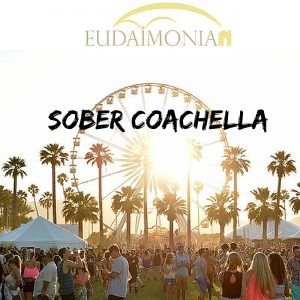Choosing the right facility for residential addiction treatment can feel like a daunting task. Convenience makes it tempting to find the closest treatment center to home and settle for what’s available, but there may be better options out of state that can increase recovery success.
The advantages of traveling out of state for addiction treatment are hard to ignore. Specifically, we’ll look at why Austin, Texas may be where your recovery journey should begin.
Reason #1: Out-of-State Rehabs Have Higher Retention Rates
It seems logical and safe to stay close to home, family and responsibilities. However, it’s important to consider what you need to provide a better future for yourself and your loved ones. Attending an out-of-state rehab may seem scary, but the benefits could save your life.
Residential addiction treatment has a 12% higher completion rate for those who travel and are admitted from a different state.
There Are More Options
Limiting yourself to programs that are in your state eliminates countless facilities that may be better equipped to address your specific needs. Finding the perfect treatment program is essential to staying sober, and widening the scope of your search greatly increases your chances of success.
There Are Fewer Distractions
It’s an unfortunate truth while you’re in treatment, life carries on. It’d be easier if life stopped for a while until you could find your balance, but the carousel spins on, and it’s easy to get caught up in everything that’s happening around you: relationships, jobs, drama. When you remove yourself from those pressures, you’re left with one goal: improve yourself. It’s all about you. Having that ability to remove all of life’s distractions will allow you to better take advantage of everything treatment has to offer.
Recent studies have confirmed that substance abuse alters the way individuals respond to stress, leading to a greatly increased risk of relapse when immersed in stressful situations.
You’re Separated from Negative Influences
Staying close to home makes it easy for old friends with active addictions to jeopardize your recovery. Residential addiction treatment facilities that are located out of the state remove you from these negative influences and allow you to focus on building your new life.
You’re Removed from Possible Triggers
The goal of rehab is to not only help you reach sobriety but to educate you on possible relapse triggers that will undoubtedly crop up throughout recovery. Until you’re well-equipped to cope with those triggers, it can be beneficial to remove yourself from them by attending treatment out-of-state.
Some common triggers include:
- Stressful situations
- Spending time with active users
- Insomnia
- Peer pressure
- Returning to old stomping grounds
- Overconfidence in sobriety
Did you know that many insurance plans cover out-of-state treatment? Call our experts to verify your benefits: 1 (855) 969-3668.
You’re More Likely to See It Through
You’re going to encounter challenges in treatment, there’s no way around it. But those challenges are where real change begins to take place. In a program close to home, it is all too easy to give up and walk away. If the center is out of state, though, it is much more difficult to leave, which encourages you to overcome the hardships and succeed.
You Can Retain Your Privacy
Addiction is a very personal struggle. Though it’s nothing to be ashamed of, many people prefer privacy in the beginning of recovery. Out-of-state treatment will allow you to retain a level of privacy by removing you from your local community and placing you in a safe, confidential place of healing.
Reason #2: Texas is an Ideal Place to Live
Attending residential addiction treatment in Austin, Texas brings with it many benefits, especially if you choose to take your family with you or stay after treatment ends. The life skills program at Nova Recovery Center will prepare you for living a productive life by helping you build your resume, find a place to live and apply for a stable career.
It’s common for those who attend an out-of-state rehab to want to stay in the area after treatment ends. A new location brings with it a fresh start, which can improve success rates during early recovery. When deciding on a treatment center, it’s helpful to have an understanding of the surrounding location.
Demographics
Austin is the state capital and the fourth largest city in Texas. There are 205 city-owned parks and playgrounds across 322 square miles of land. Austin is home to more than 900,000 residents, and the median age is 29. On average, each household makes an annual income of $53,946, which is a full percentage point higher than the national median.
Thriving Job Market
As one of the United States’ leading tech hubs, Austin ranks twenty-first on Forbes’ list of the Best Places for Business and Careers. The region’s rapid growth continues to provide plenty of jobs for its residents. Technology companies with headquarters in Austin include 3M, Apple, AMD, Cisco Systems, eBay and Electronic Arts.
There are also several recovery communities in Austin that offer volunteer and job opportunities that allow you to give back to your community and help others achieve sobriety. Recovery communities also provide you with peer support groups and recovery coaches to help you lead a life you can be proud of.
Nova Recovery Center will gladly introduce you to a partnering community before you leave our facility to ensure that there are no gaps in your support network.
Some recovery communities in Austin include:
- Communities for Recovery
- The Council on Recovery
- Texas Austin Recovery Group, TARG
- Bluebonnet Trails Community Services
Low Cost of Living
You don’t have to spend a lot to lead a high quality of life in Texas. Real estate is both abundant and affordable. The overall cost of living in Austin is six percent lower than the national average:
- Groceries: 14% lower
- Housing: 13% lower
- Utilities: 2% lower
- Transportation: 4% lower
To get you started, Nova Recovery Center offers affordable sober living housing in our aftercare program. Through the structured living facility, we will teach you the necessary life skills to transition into a productive life. The environment is comprised of a community of recovering individuals who are able to share experiences, strengths and hope while growing together.
Low Taxes
Texas is known for having no personal income tax or corporate income tax. Sales tax runs anywhere from six to eight percent, but overall the tax burden is lighter than many other states.
Exceptional Education
Austin was voted America’s number one college town by the Travel Channel and the sixteenth most literate city by Central Connecticut State University. Austin is home to 29 public school districts, 17 charter schools and 69 private schools. Of those, the Liberal Arts and Science Academy High School of Austin, Texas has consistently been within the top 30 high schools in the nation. Additionally, the University of Texas at Austin operates the seventh-largest academic library in the nation.
Austin Community College provides over 60,000 students with affordable, flexible education each year. At only $67 per credit hour and with over 100 programs to choose from, ACC offers a unique opportunity to learn new jobs skills and advance your career.
If you have a specific occupation in mind, Austin also offers numerous vocational and trade schools to kickstart your career. Available programs include technology, welding, culinary arts, medical billing and more.
Vocational and trade schools in Austin include:
- ITT Technical Institute
- Southern Careers Institute
- The Art Institutes
- Virginia College
- National American University
Reason #3: Warm Weather is Therapeutic
During the turn of the century, it was believed that a warm climate, healthy food and rest could cure even the most chronic of illnesses, such as tuberculosis, upper respiratory diseases and arthritis. Now we know that alone isn’t the cure, but there’s something to be said for the power of a warm climate. There are numerous psychological and physiological benefits of warm weather during addiction treatment.
Weather in Austin, Texas
One of the benefits of living in Austin is that you get to experience several different seasons, not just hot, sunny weather every day.
Temperature ranges for the seasons include:
- Spring: 51 to 87 degrees
- Summer: 75 to 95 degrees
- Fall: 51 to 82 degrees
- Winter: 41 to 62 degrees
Health Benefits of Warm Weather
Spending time in the warmth of daylight has a seemingly endless list of benefits, most of which can help improve the comfort and success of addiction treatment. One study performed on the effects of daylight on the body proved the hypothesis that increased time in the sun improves your mood, memory, openness to new information and creativity.
Another study showed that daylight helps to:
- Improve sleep quality and duration
- Relieve pain
- Lower the risk of heart attack
- Improve vision
- Reduce headaches
- Reduce the symptoms of ADHD
- Prevent obesity
- Reduce depression
“Being outside in pleasant weather really offers a way to re-set your mind.” – Matthew Keller, post-doctoral researcher at University of Michigan.
Effects of Weather on Depression
The lack of sunlight that occurs in fall and winter months can be overbearing. It is common for dreary, cloud-covered skies to bring with them feelings of irritability, exhaustion or hopelessness. These negative emotions often result in mental health issues, such as depression or seasonal affective disorder (SAD). If left untreated, severe cases of weather-related depression can even lead to suicide.
Poor weather conditions can also negatively impact:
- Sleep Patterns
- Energy Levels
- Concentration
- Appetite
- Weight
- Social Skills
About 20 percent of Americans with a mood disorder, such as depression, also suffer from a substance abuse disorder.
Effects of Depression on Addiction
Trying to juggle both depression and addiction often leads to compounding symptoms that result in a cycle of pain and substance abuse. Removing yourself from the gloomy weather and transferring to a warmer location will improve your mood and can reduce (or eliminate) your symptoms of depression. This boost can dramatically help in the fight to overcome addiction and achieve lifelong recovery.
Depression and addiction are interwoven in several ways:
- Depression can trigger substance use as a form of self-medication
- Substances can precipitate depression by altering brain chemistry
- Substance abuse can incur negative consequences that could lead to depression
Life in Residential Addiction Treatment
Residential treatment provides you with the highest chances of a successful and sustainable recovery. Outpatient programs may be more flexible, but there is no replacement for the power that comes with immersing yourself in a community of peers and professionals whose only goal is to help you succeed.
Highly structured programs eliminate gaps of downtime that allow cravings to creep in and provide stability through the hardest moments of recovery. If you’re looking for a beautiful facility that offers cutting-edge residential treatment, sober living facilities and aftercare programs all in one, Nova Recovery Center may be a great option for you.
The Admissions Process
At Nova Recovery Center, we offer a simple admissions process to make your first steps on the road to recovery as easy as possible. We accept admissions 365 days a year, and it all starts with a confidential phone call. During that initial call, a member of the Nova team will gather information to ensure that you can get what you need from our program and answer any questions you may have.
“Nova changed my life. I am finally happy and feel prepared to begin my journey to recovery in the real world. The facility is like a resort and the recovery and clinical staff show how much they love their jobs and care.” – Anthony C.
Transportation
The thought of making transportation plans is daunting in the best of times. We want to ensure that your arrival here at Nova is as smooth as possible, so we will work with you to arrange transportation from your home to the facility. No matter how you get here, we will make sure that you arrive safely and hassle-free.
Length of Time in Treatment
The longer you’re in treatment, the higher your chances of lifelong sobriety, which is why we highly recommend participating in our 90-day program. Being away from home for 90 days may seem like a long time now, but in those three months, you will gain the ability to build healthier, happier relationships.
We also offer effective 30- and 60-day programs. Our shorter programs are good options for those who are only able to be away from home for a limited amount of time or who are looking for a lower-cost solution.
If you choose to participate in our aftercare and sober living programs, you’ll be able to extend your stay. The length of time spent in the sober living facility varies from client to client and can range anywhere from a few weeks to several months. You’re welcome to stay as long as it takes to feel ready to transition back into daily life.
Day-to-Day Life in Residential Treatment
Residential treatment is a unique place to be—it offers unprecedented support through a tight-knit community of peers and staff. You’ll be surrounded by people who genuinely care about you and want to see you succeed.
Our residential program is well-structured and is built around evidence-based, clinical therapies. We believe in providing clients with highly personalized, effective treatment plans that address their specific needs.
Therapies we offer include:
- The Daring Way™
- Family Therapy
- 12-Step Meetings
- Exercise Therapy
- Behavioral Therapy
- Individual Therapy
Each day, residents wake up, get ready, eat breakfast then start their treatment schedule for the day. To break up the daily routine, though, we often go on weekend excursions off-site. Our clients enjoy activities like bowling, hiking, swimming and relaxing at the park. Recovery is a journey, but it should be a little fun too.
“I have been trying to get sober for 3 years and have been to other rehabs several times. Years of AA weren’t able to teach me as much as Nova has. I feel a spiritual connection and a peace today that I never felt before when I left treatment.” – Juliana N.
Communicating with Loved Ones
One of the hardest parts of out-of-state treatment is probably leaving your loved ones behind, even if for just a short while. Fortunately, with today’s technology, being apart is not nearly as difficult as it used to be. You’ll be able to have regular, scheduled calls home each week, and we’re happy to set up video calls for you. Seeing a familiar face can be reassuring and help give you the strength you need to continue.
Aftercare Programs
Once treatment is complete, we encourage you to stay with us a bit longer and participate in our aftercare program. You’ll have the benefit of residing in our sober living apartments, where you’ll receive valuable life skills training, chronic relapse resources and life coaches. These tools will help make the transition from treatment to independent life as smooth as possible.
If you decide to continue living in the area afterwards, we’ll help you find a place to live and get your feet off the ground. Staying nearby will allow you to remain in touch and continue to receive the added support that is so crucial to early recovery.
“I am so happy to have gotten the chance to come to Nova. I have learned way more than I ever thought possible.” – Alexa G
Getting Started
You just completed the first step of your recovery journey. You’ve learned all about attending treatment out-of-state, the perks of living in Austin, the health benefits of warm climates and the change that Nova Recovery Center can bring to your life.
When you’re ready to take the next step, give us a call: 1 (855) 969-3668.







